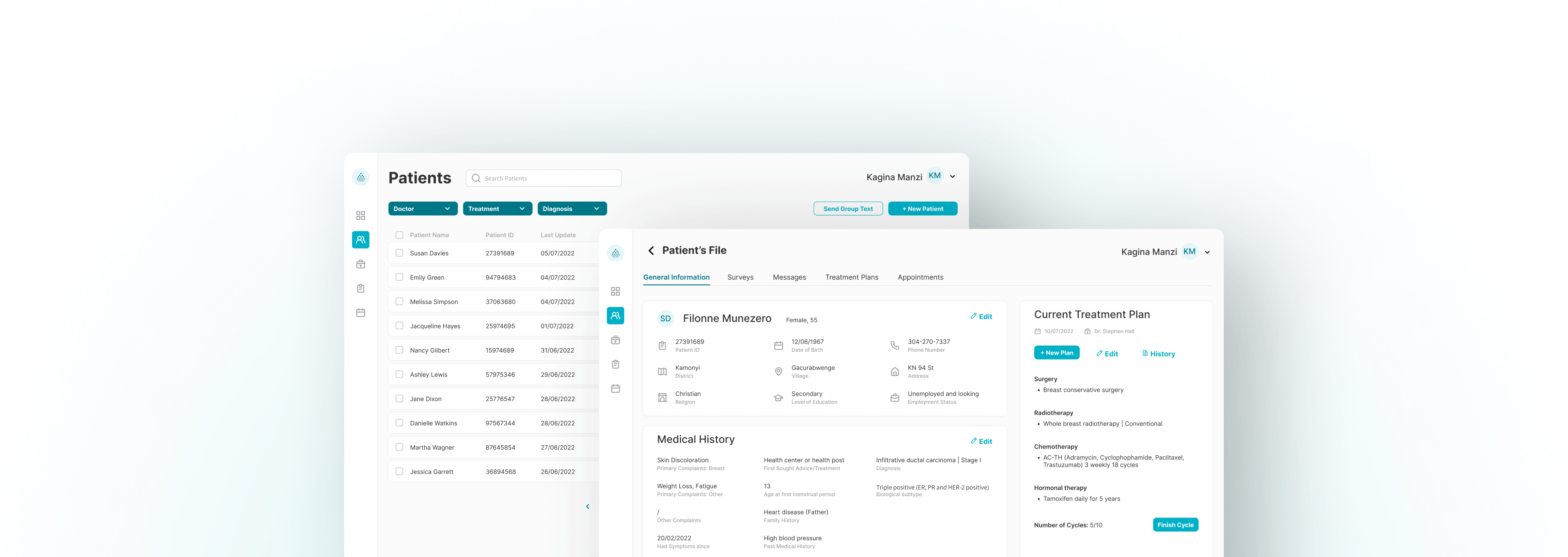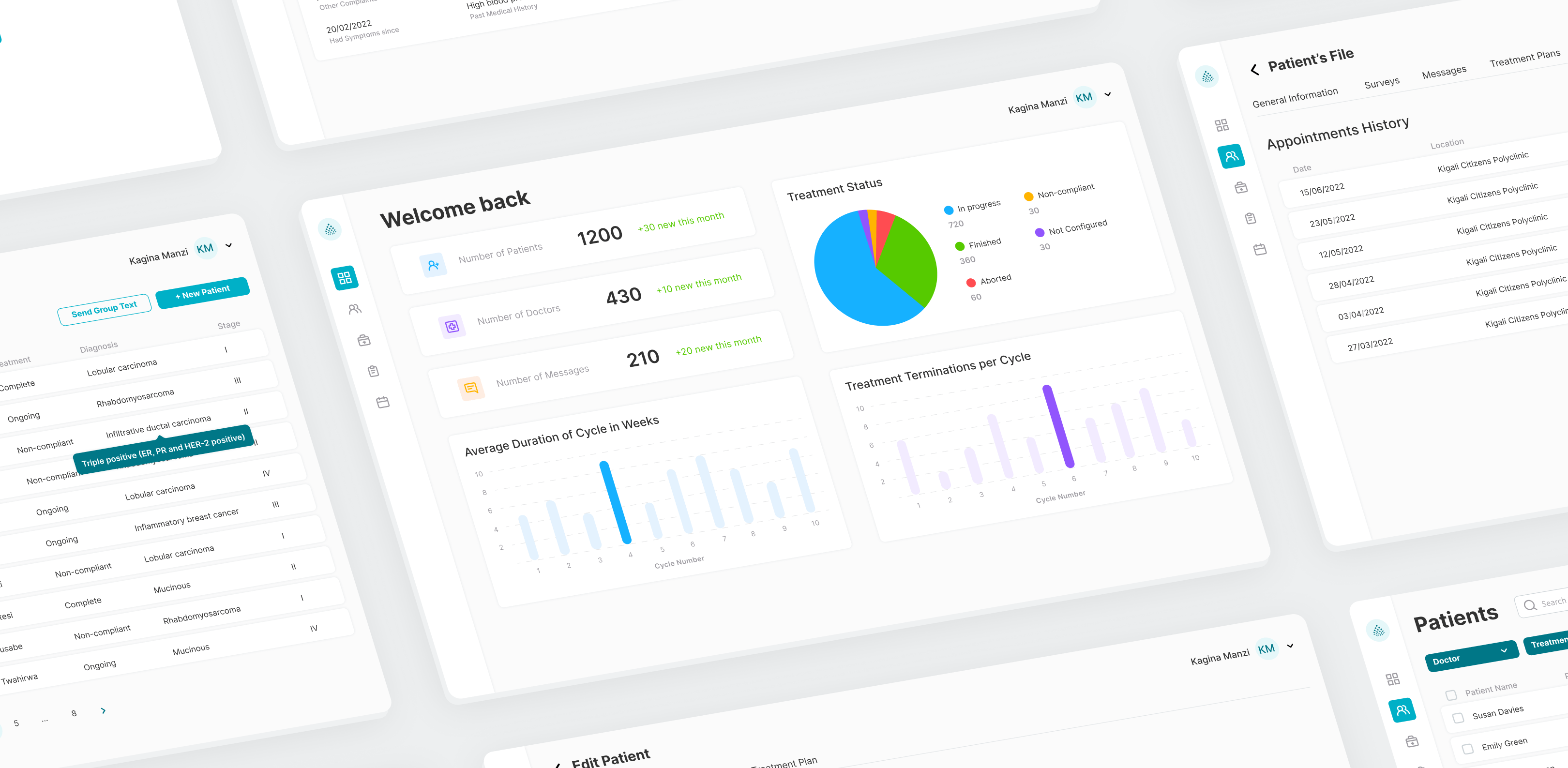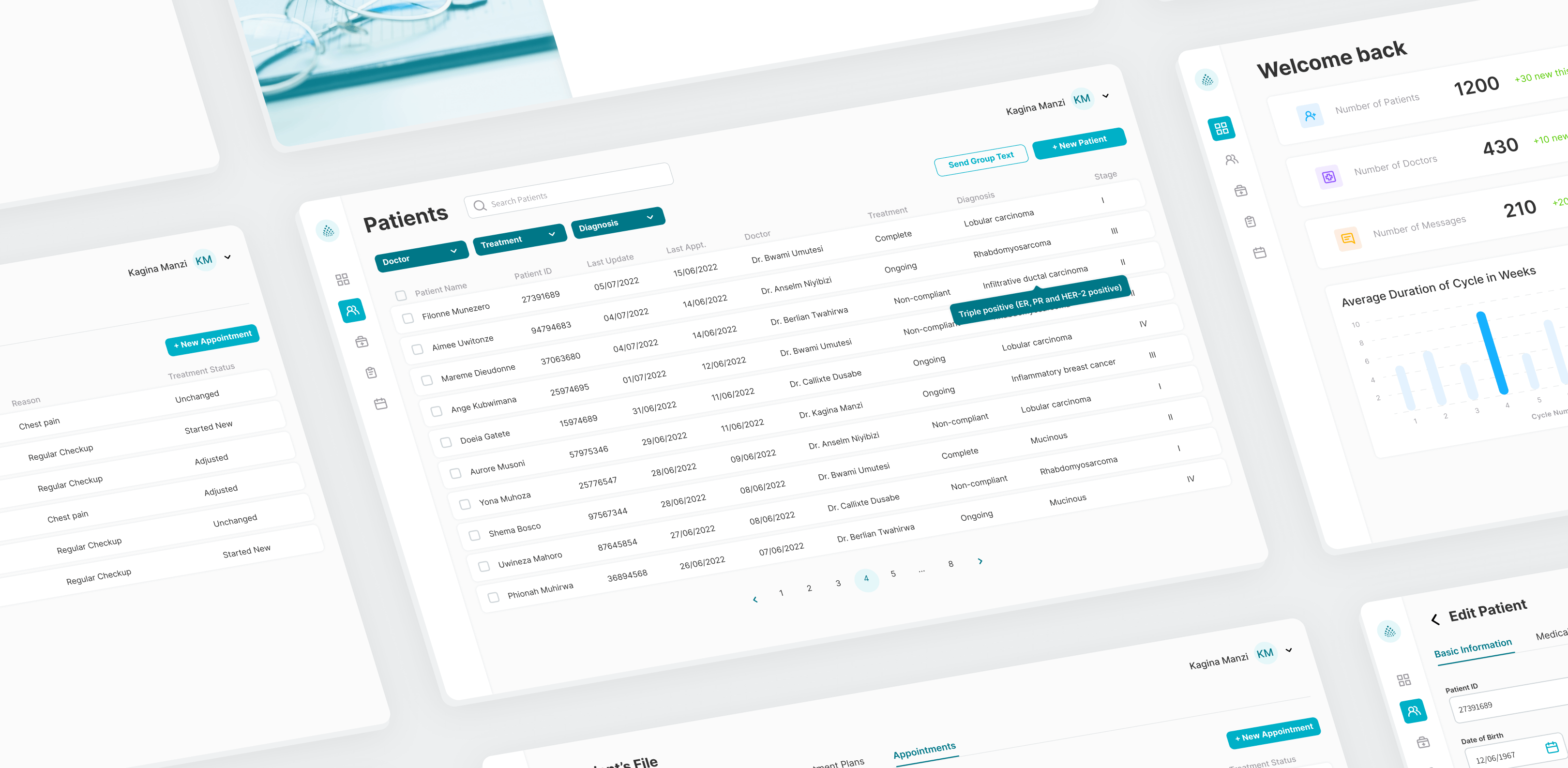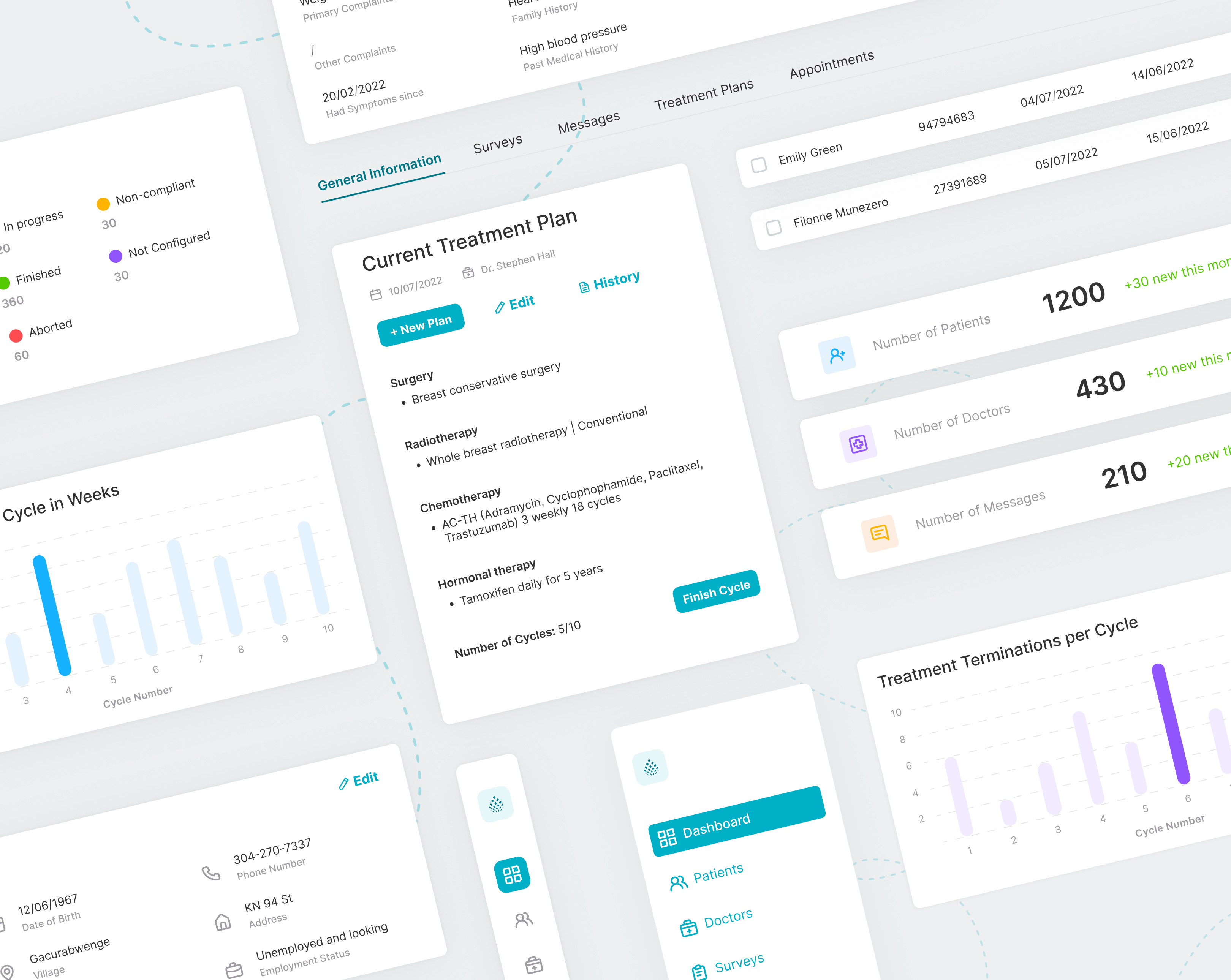MEDIKIRA
medical platform for automated tracking of treatment side effects in oncology patients

medical platform for automated tracking of treatment side effects in oncology patients

I worked on this project as the sole designer, responsible for designing a web-based monitoring platform that supports oncologists in Rwanda. The project was focused on helping doctors keep track of cancer patients’ treatment progress and medical history, despite limited access to digital tools on the patient side.
The main phases of my work included: Understanding Technical Constraints, Structuring Medical Data, Wireframing, UI Design, Testing & Iteration with Stakeholders.

Desktop UI Dashboard
Due to the shortage of oncologists in Rwanda, patients often meet a different doctor at every visit. Without a centralized system for medical records, doctors had to rely on patients retelling their history, often incomplete or inaccurate, which created delays and risked missing critical information.
There was no easy way for doctors to monitor how patients were responding to treatment between appointments. Given that follow-up visits could be weeks apart, it was important to find a way to surface early signs that a patient might need urgent attention.
Most patients did not own smartphones or computers, which meant we couldn’t rely on standard digital forms or apps for collecting feedback. The challenge was to design a system that worked through basic mobile phones without losing clarity or engagement.

Desktop UI Patient Overview
Here’s how I approached these challenges, with a focus on building a system that worked within real-world limitations while supporting both medical staff and patients:

UI elements

Next case study